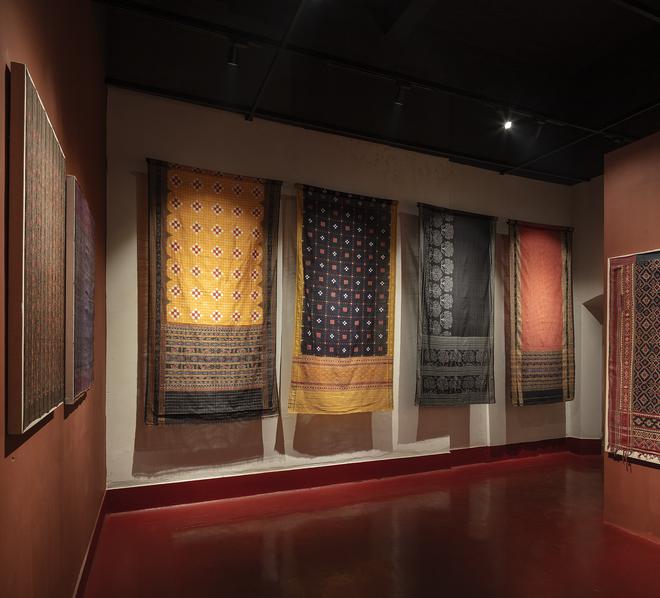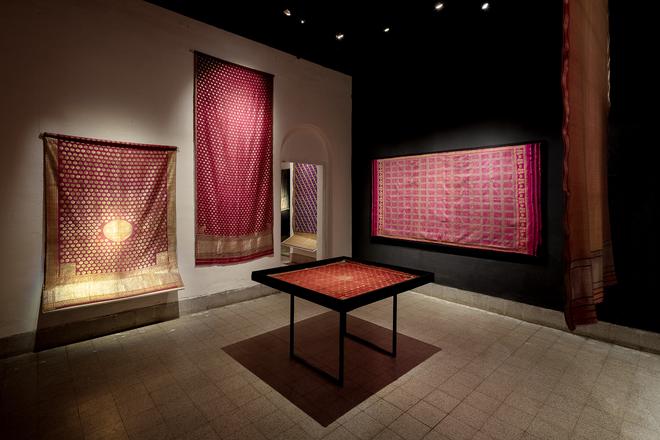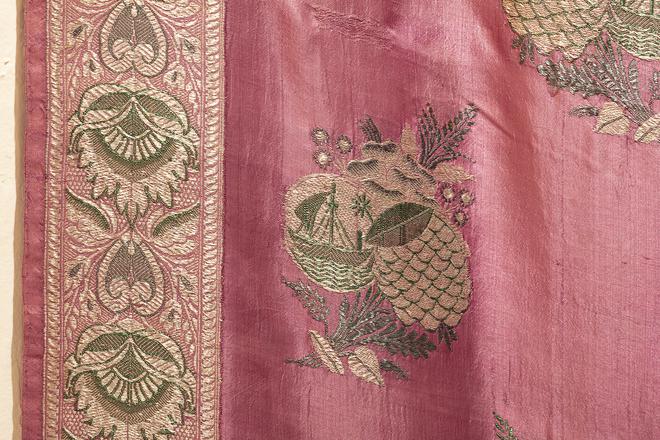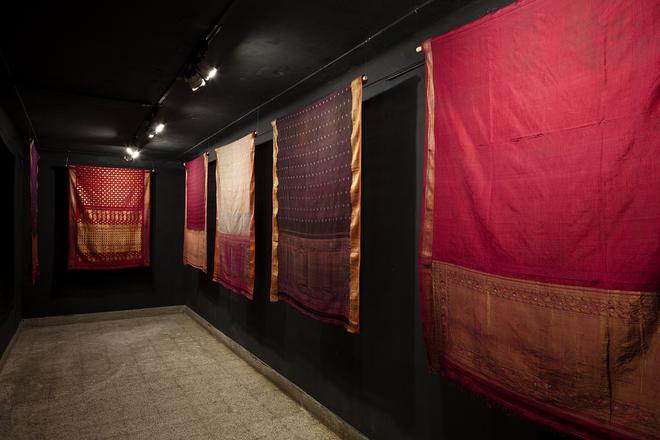
A sari can either be the most conservative or revealing of garments and the Red Lilies, Water Birds — The Saree in Nine Stories is a revelation on this piece of clothing.
The picturesque title of this exhibition, Red Lilies, Water Birds is derived from Muthollayiram (Red Lilies, Frightened Birds), an anthology of Tamil classical poems from the medieval era. Presented by the Registry of Sarees, a Bengaluru-based research and study center helmed by Ahalya Matthan, the 81 saris on display are not being showcased for their aesthetics alone, this native piece of clothing traces the socio-economic course of the nation over the past century.
The first iteration by the Registry of Sarees titled Meanings, Metaphor – Handspun and Handwoven in the 21st Century was showcased last year. The second, which is currently underway, tells this tale of the “saree in nine stories”.
“When we use the term sari, it implies yardage and could include a turban or dhoti, too. Any unstitched length of fabric fits the bill,” says Aayushi Jain, a member of the curatorial team for Red Lilies, Water Birds.

This is their second iteration, says Aayushi, adding that the present narrative shows how the sari as an identity was shaped by Western developments.
Structured into different sections, the exhibit shows how industrial development in Europe slowly but steadily stunted the growth of the weaving community by diminishing the demand for their wares. As a former British colony, English, Dutch and Portuguese influences are to be expected; however, Red Lilies opens with three saris woven in Austria, pinpointing the far reach of the Industrial Revolution.
Ironically, India, which was the prime producer of saris became a marketplace for European powers who were producing saris and selling them in India. While these textiles appealed to Indian tastes, they were created with no frame of reference. For instance, the width would vary or they would be manufactured without a pallu (the decorative, free-falling end of a sari).
“Anything they felt was irrelevant was simply removed,” says Aayushi. “At the same time, they were trying to mimic all the aesthetics that were a part of it, hence the presence of butas (dots), parrots, flowers and other popular motifs.”
Apart from influences, Red Lilies draws focus to different centres of production in India and how weavers would travel across boundaries. For instance, Banaras was comprised two gharanas or styles. One was called the Mualva Gharana that was continuously travelling, even going overseas to participate in textile exhibitions. They would return and incorporate elements from their travels, such as wallpaper prints, into their work.

“This is how the sari went from being a garment to becoming an instrument of storytelling. Eventually, motifs such as pineapples, coffee beans and Eastern pagodas began to make an appearance on saris,” she says, elaborating on how the depiction of these non-Indian objects reflected changing tastes and influences.
Visitors to Red Lilies will see these evolving patterns in the Benares and Paithani rooms as well in those dedicated to saris from Gujarat and South India.
The exhibition also draws attention to aesthetics (the popularity of checks and stripes in South Indian weaves) and techniques such as the Ikat and its varied prevalence in different states. “Basically, we’ve tried to tell the story of the sari with its different parameters — centres of production, technique, and even colour,” says Aayushi.
This is highlighted at the Red Room where this colour, auspicious to Indian culture and lifestyle, appears in saris from across the country in different designs.
Needless to say, one exhibition is not enough to showcase the multifarious facets of the sari, hence the “nine stories,” says Aayushi, who adds that though this second iteration took about a year to conceptualise and set up, the team spent seven years collecting the 81 exhibits that comprise this showcase from different parts of the country.

Red Lilies was conceptualised, curated and designed by Barkha Gupta, Aayushi Jain and Preeth Khona with Daisy Nathan, production head and Radha Parulekar, design executive and researcher. Manasvini K Ramachandran was the textile and art conservator, while Vishwesh Surve was textile and space designer.
Saris, which are over a 100 years old, a royal canopy replete with gold thread and reversible saris are all to be found at Red Lilies, where the team is available to take visitors on a guided walkthrough.
A little bit of history, a whole lot of culture — this is definitely not an exhibition for social butterflies looking to add to their wardrobe.
Red Lilies, Water Birds by the Registry of Sarees will be on display till December 23, 2023 at 12/2 Lakshmi Mandir, Hayes Road, Richmond Road, Shanthala Nagar.







